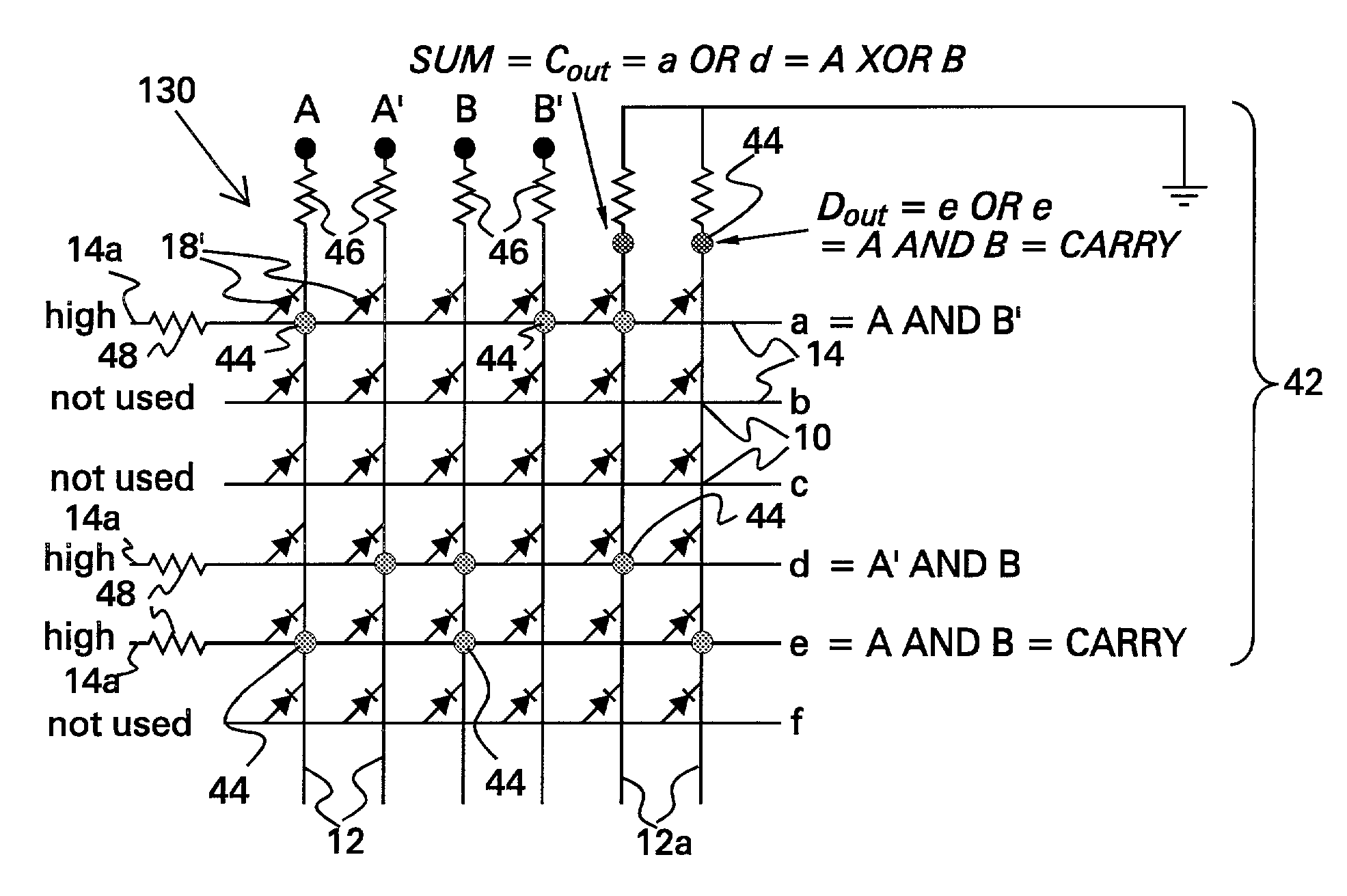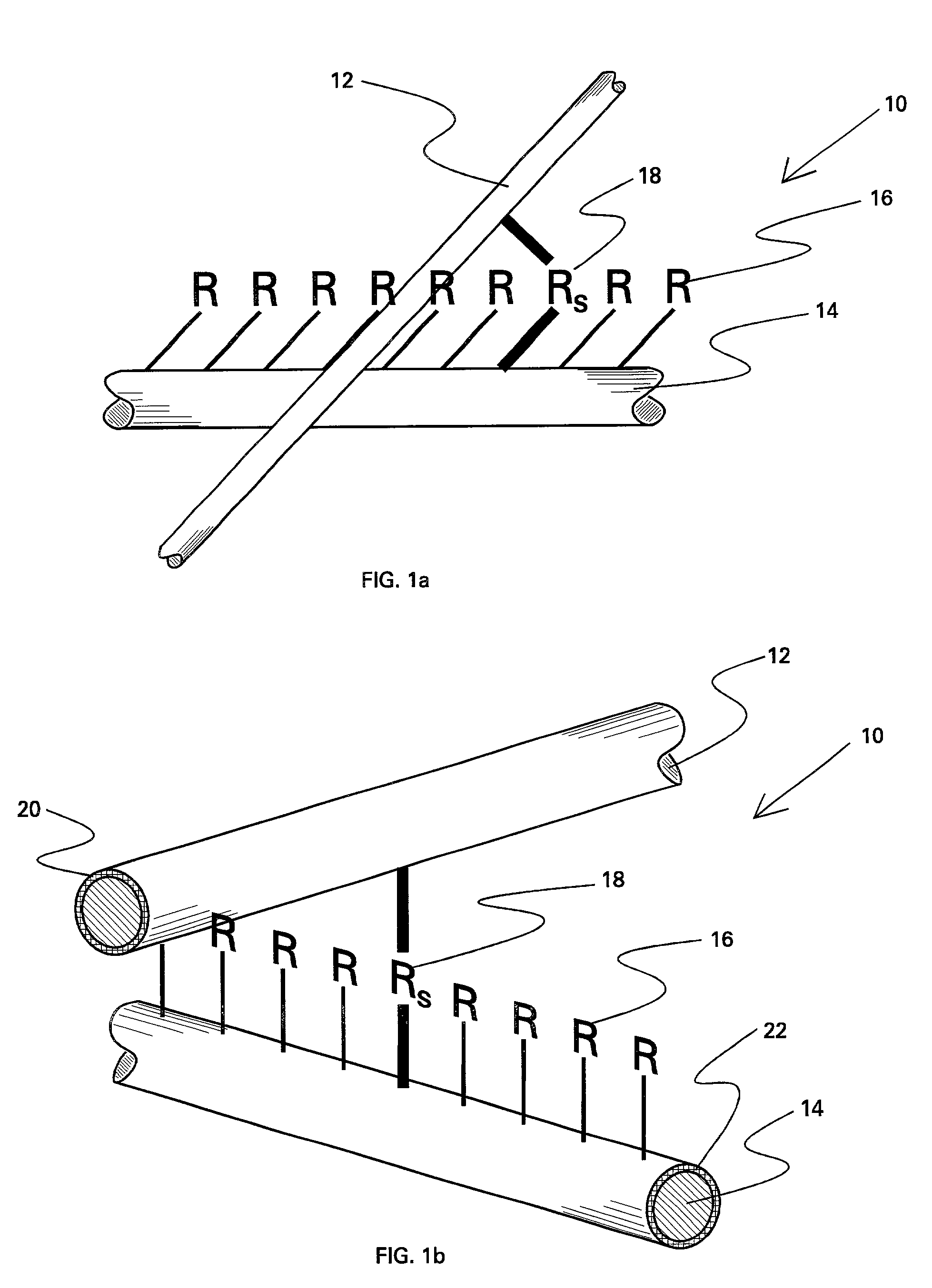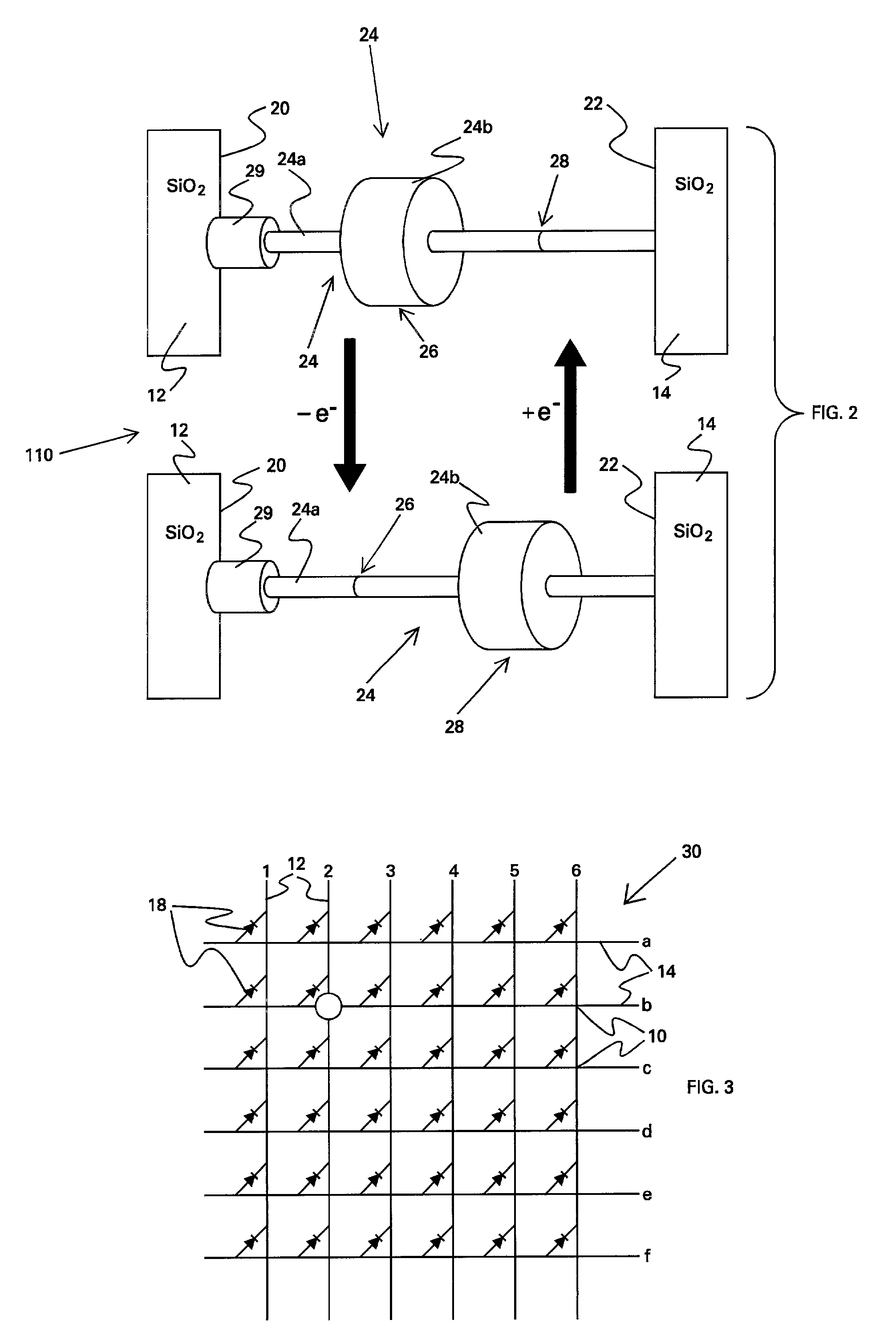Molecular wire crossbar logic (MWCL)
a crossbar logic and molecular wire technology, applied in the field of electronic devices, can solve the problems of direct writing a wafer full of complex devices, each containing trillions of components, and the limit of the miniaturization that has accompanied the growth of si ics, and achieve the effect of reducing the cost of implementation, and reducing the complexity of the control layer
- Summary
- Abstract
- Description
- Claims
- Application Information
AI Technical Summary
Benefits of technology
Problems solved by technology
Method used
Image
Examples
example circuit 1
[0065]With only the diode-logic elements described above, a 6×6 diode-crossbar 30, for example, can be turned into a defect-tolerant 2-bit adder 42, as shown in FIG. 7, which uses the logic elements illustrated in FIG. 6A. This logic circuit 42 operates as follows. Certain of the junctions are set to “1”, and these junctions are denoted 44 in FIG. 7. This can be carried out similar to how the crossbar diode memory is configured. These are diode junctions. All other junctions are assumed to have very high resistance and not short the vertical and horizontal wires 12 and 14. Resistors 46 are then connected at the top of the crossbar 30, which may be a relatively long section of nanowire. Additional resistors 48 are connected to the side of the crossbar 30, as needed. This adder uses 4 inputs, labeled A, A′, B, and B′. A and B are the two 1-bit numbers that are to be added together, and A′ and B′ are the complements of those numbers (i.e. if A=“1”, then A′=“0”). Using complements avoid...
example circuit 2
[0066]FIG. 9 depicts the experimentally-determined truth table for an AND gate in which three switches (within a single crossbar) have been configured together to make an AND gate; this device is essentially the same as that shown in FIG. 4B, except that instead of supplying an external resistor, an additional molecular switch was used. It will be noted that in a conventional linear resistor network, even if one had complete control over each resistance value, the best one could hope for in terms of a high / low ratio is a factor of 2, yet the network disclosed herein achieves greater than a factor of 10. This is because the resistors employed in the network of the present invention are based on resonant tunneling through molecules, and the resistance values are voltage-dependent. They are an example of asymmetric non-linear resistors. This allows a much greater voltage difference between logic “0” and logic “1” than can be achieved with linear resistors.
[0067]FIG. 10 depicts the expe...
PUM
 Login to View More
Login to View More Abstract
Description
Claims
Application Information
 Login to View More
Login to View More - R&D
- Intellectual Property
- Life Sciences
- Materials
- Tech Scout
- Unparalleled Data Quality
- Higher Quality Content
- 60% Fewer Hallucinations
Browse by: Latest US Patents, China's latest patents, Technical Efficacy Thesaurus, Application Domain, Technology Topic, Popular Technical Reports.
© 2025 PatSnap. All rights reserved.Legal|Privacy policy|Modern Slavery Act Transparency Statement|Sitemap|About US| Contact US: help@patsnap.com



